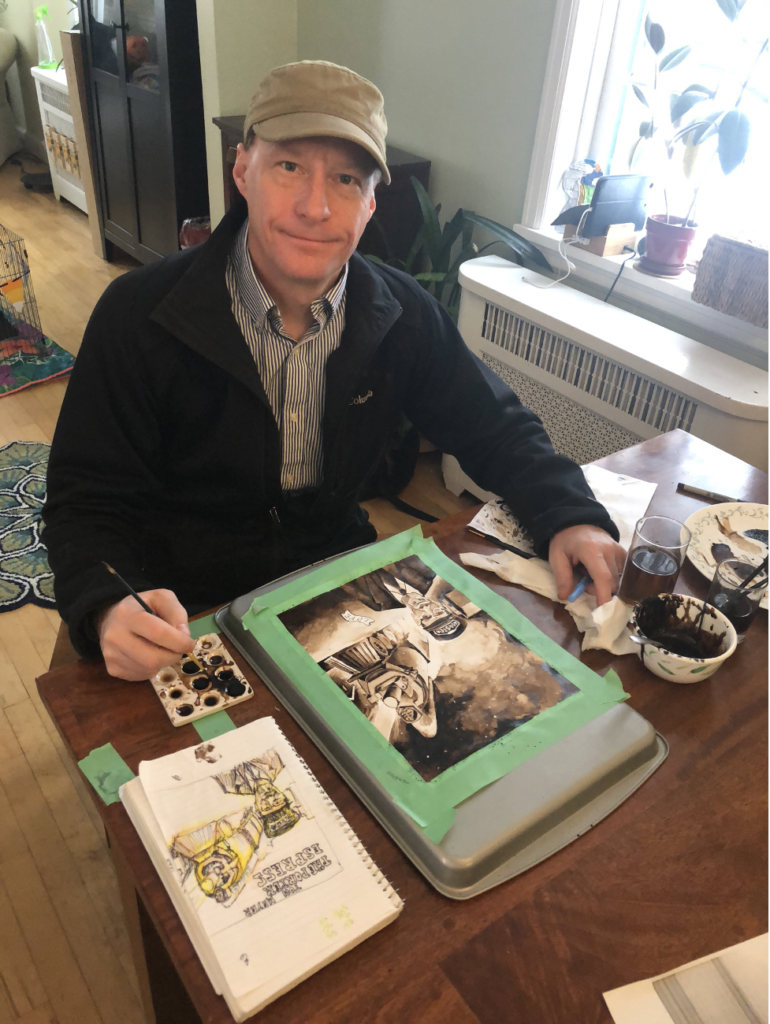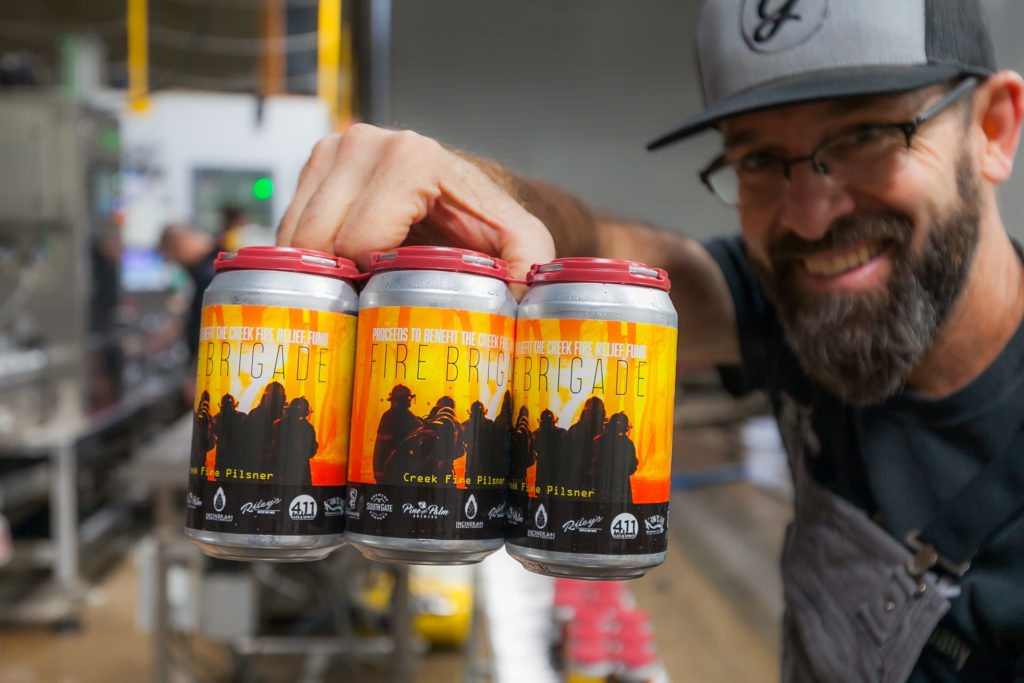Creativity is essential to the art of Malting and Roasting grains. Each batch is truly a unique work, a combination of millions of individual seeds of a certain variety, grown in a certain place and time, never to be repeated. No two batches act exactly the same under the direction of the maltster or roaster and the art is used to shape the process along the way so that the finished work will be as close as possible to the vision of quality that inspired it.
From this, a palette of materials is created to be used by other artists, most commonly brewers, bakers, and distillers. Malt art isn’t limited exclusively to the edible mediums, though. The beautiful colors, shapes, and tones of specialty malts also inspire artists working in the visual arts.
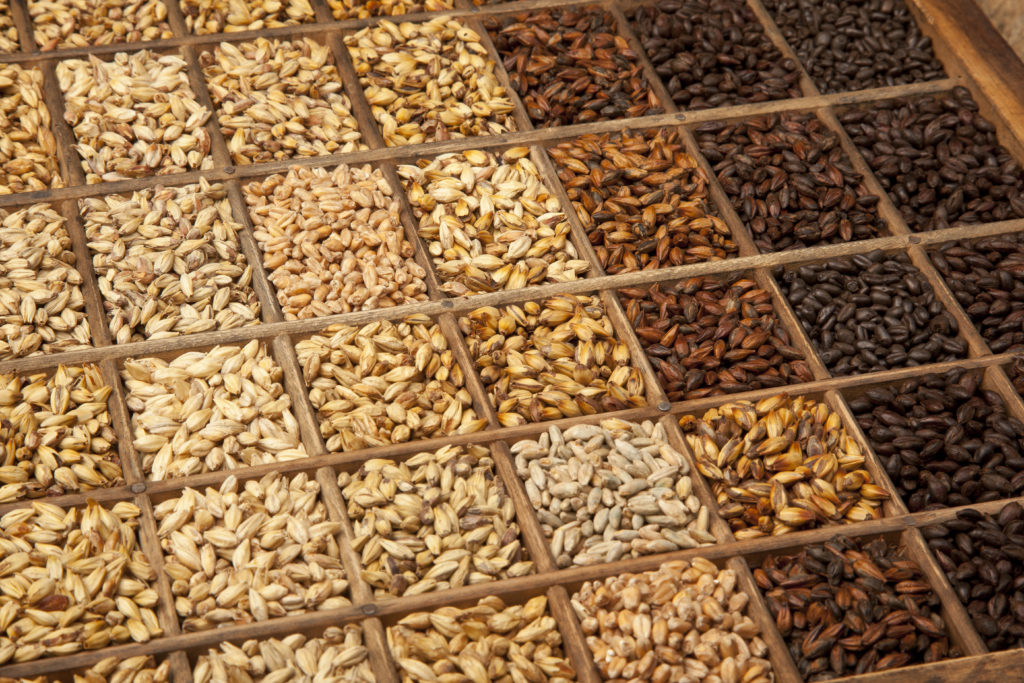
The first year I started working at Briess we held a contest for our employees’ children to develop a Christmas design using malt. The resulting artwork created by Stacy, daughter of Connie Krebsbach in Customer Service, became our company Christmas card for that year.
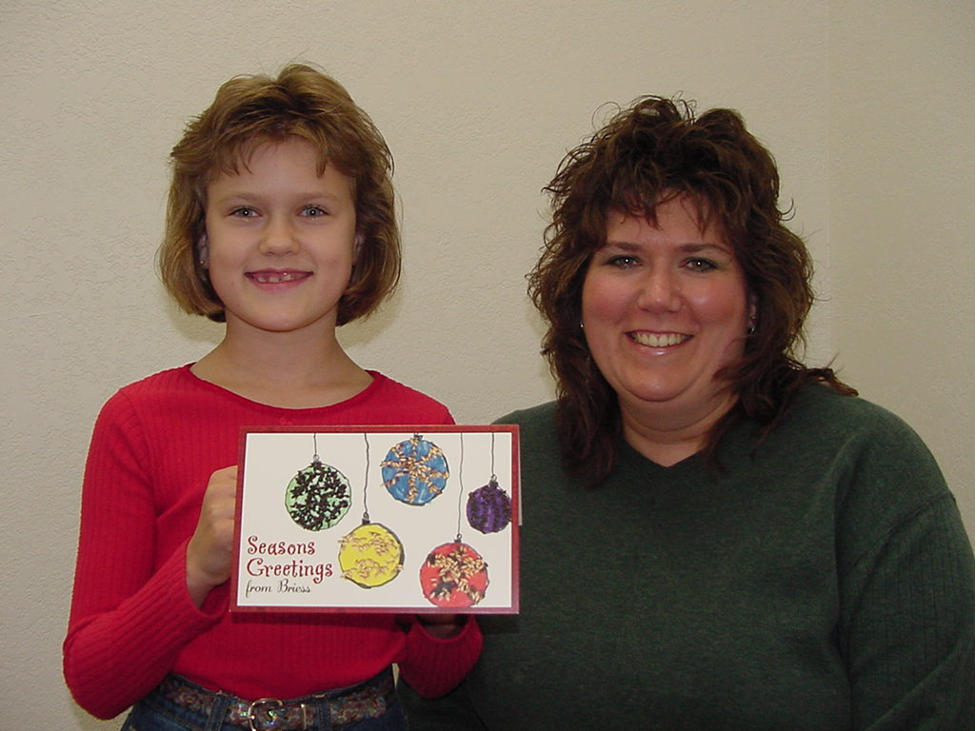
One of our Christmas traditions at Briess is to create a special Christmas beer to give as a gift to all employees. Each year employees get together to design a hand-bottled limited-edition beer to share our love of the art of brewing. We also create a label that has historically often been hand-drawn by a member of the staff or their family.
I have gotten a couple of chances to design these labels in recent years and have used these opportunities to combine my appreciation of the art of malting with my love of the visual arts. Using specialty malts and water to create malt extracts of various hues, I used these extracts as malt ink and “watercolor” in order to draw and paint a special design.
An initial pencil drawing is inked over using the sharpened butt end of a paintbrush as an “ink” scroll. These lines are washed and painted around using malt extract diluted to various intensities to give different tones or colors.
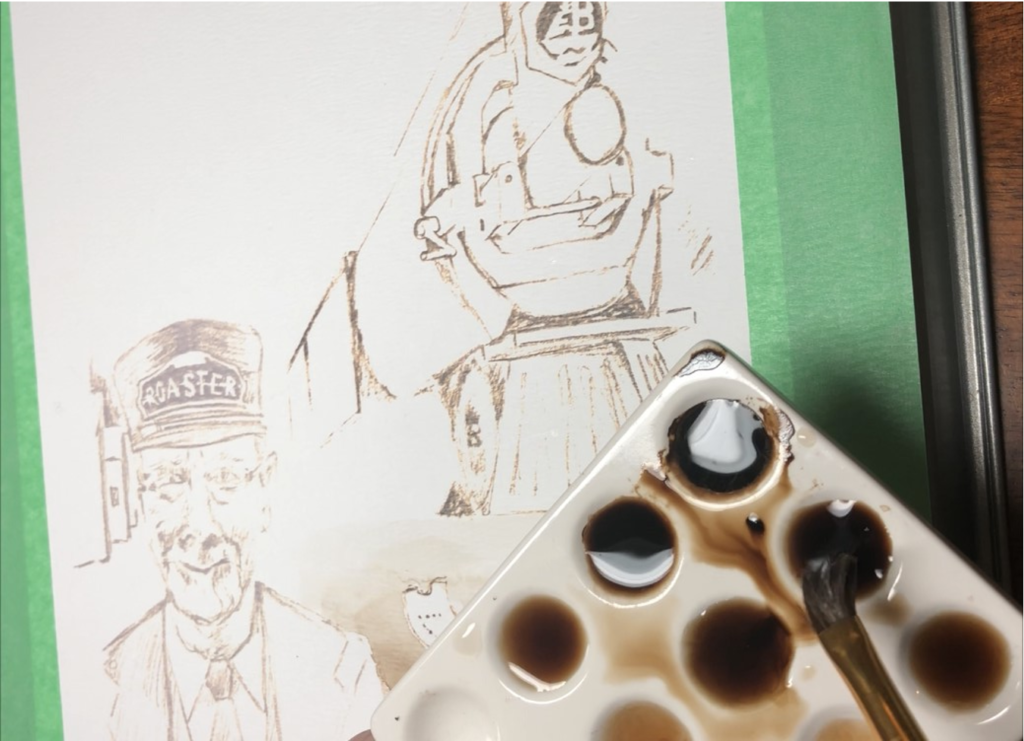
Malt watercolor is a bit tricky. Anywhere that you want to be white or light-colored has to be planned out well in advance and you have to be very careful not to smudge, smear, drip, or spill anywhere while painting. The watercolor paper absorbs the liquid quickly, so there isn’t really the opportunity to erase anything. I am right-handed so I typically paint left to right and paint each area multiple times to build up color. The label I did was for the “Porter Express” a porter whose label was inspired by the movie poster for the Polar Express. For this label, I wanted there to be distinct bright white “snow” spots. In order to achieve this, I made very small little drops with rubber cement on the paper before I started malting it. This kept those from absorbing the malt. You can see those spots appear in this video as I paint over them:
For the Porter Express, I only used black malts to make the extract. The artwork is quite dramatic but somewhat monotone. This year I also used some caramel malts to give reddish hues. If I get the chance to make a label again, I will use more of these as I liked the variety.
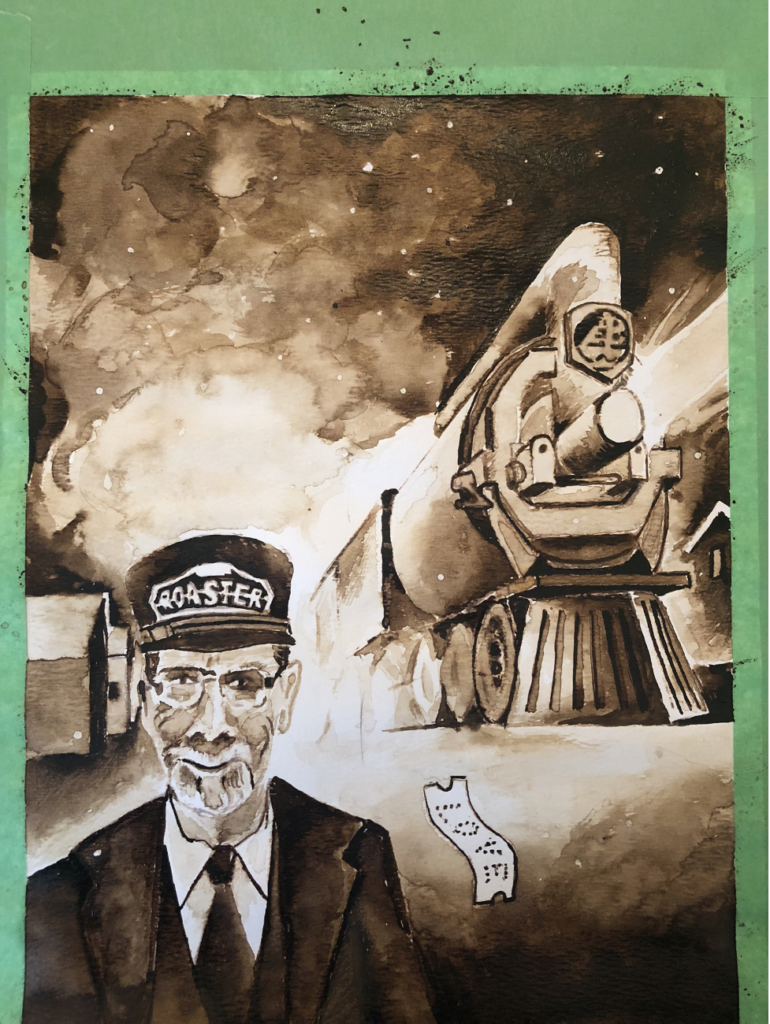
I encourage you to appreciate the art of the maltster and let our art inspire yours, whether it is edible, visual, or both. Like-minded artists have even used beer or dried spirits to make art, adding yet another dimension to the art of Malt. Check out:
How to Paint with Beer
Artist Ernie Button’s website
Cheers!
